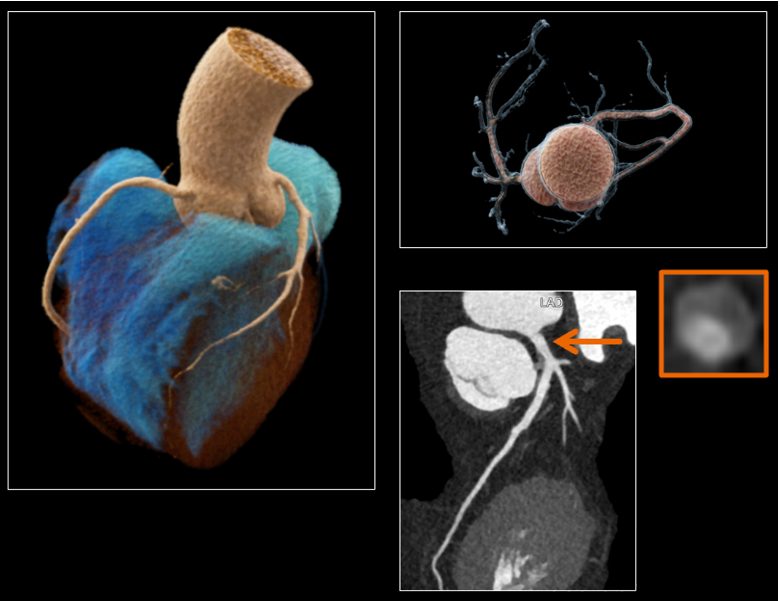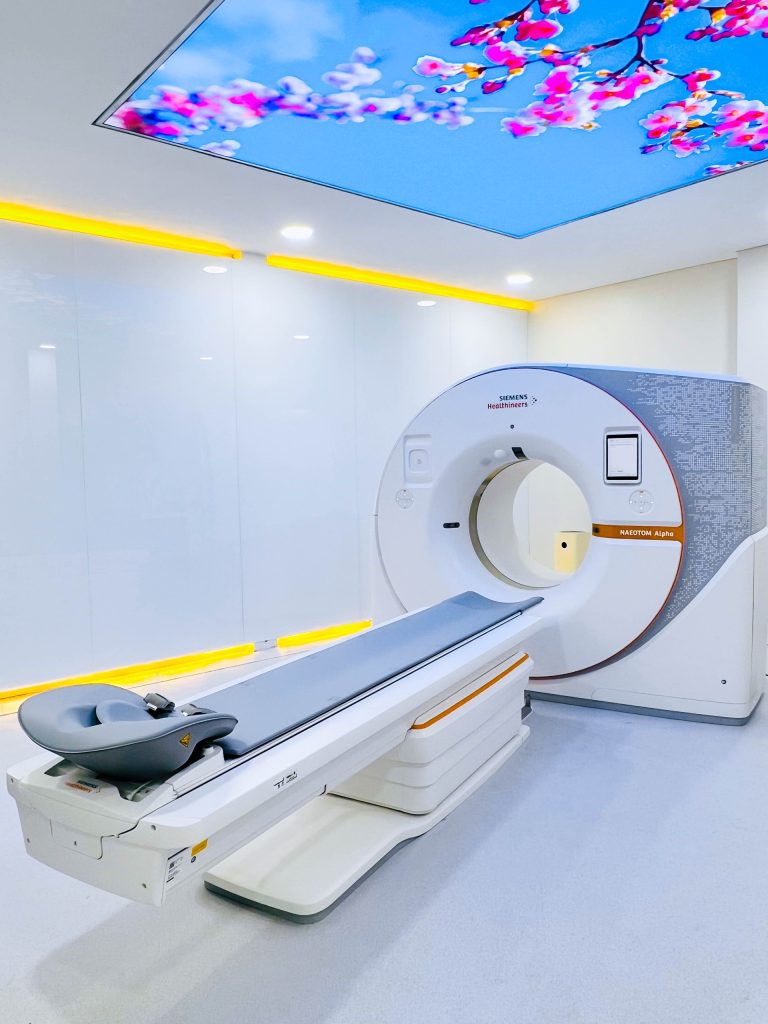By: Thalia Kaylyn Averil
Cardiac CT or computed tomography scan of the heart that produces high-resolution three-dimensional (3D) images of the heart using X-rays taken from different angles. It can reveal problems with the heart structure, valves, and aorta and can also be used to examine the heart chambers, heart muscle, pericardium or the layer that protects the heart, coronary arteries or arteries that are located around it, as well as large arteries and veins.
The objective of Cardiac CT is to obtain a clearer view of the heart’s structure and the associated blood vessels. This imaging technique serves various purposes, including identifying the causes of shortness of breath and chest pain, monitoring the heart before and after medical procedures, investigating irregularities in coronary arteries and major blood vessels, observing masses or tumors in or around the heart, examining the presence of fluid or calcification around the protective layer of the heart, assessing the functionality of heart valves, and screening for congenital heart conditions. This imaging can involve the use of contrast or be conducted without it, and when contrast is used, it is referred to as coronary CT angiography (cCTA). Coronary CT angiography supplies details about the heart’s anatomy and the blood vessels, particularly aiding in the assessment of coronary artery disease and other cardiovascular conditions.
Nevertheless, Traditional Cardiac CT has various limitations, particularly in terms of the speed of image acquisition, spatial resolution, and the resolution of soft tissue. Presently, Traditional Cardiac CT is still not ideal for capturing images of severely calcified coronary arteries and stents. Furthermore, distinguishing between fat and noncalcified plaque surrounding the coronary arteries remains challenging due to the restricted spatial resolution of Traditional Cardiac CT. Traditional Coronary CT angiography also presents a number of drawbacks, including reduced effectiveness for smaller arteries (those less than 2 mm), challenges with high-contrast situations (such as calcifications or stents), and difficulties in discerning low-contrast scenarios (like noncalcified plaque).
Therefore, the latest technology called Photon-Counting CT (PCCT) has better spatial resolution, so it can capture clearer images of the heart. By improving spatial resolution, PCCT can measure obstruction and assess fatty deposits in blood vessels more accurately than Traditional Cardiac CT. In addition, problems such as blurry images around calcium deposits and poor images showing soft tissue can be overcome with PCCT.


Figure 1. Results from photon-counting CT
So, how does photon-counting CT (PCCT) work?
Photon-counting CT and Traditional Cardiac CT employ different methods for processing photons emitted by X-rays. PCCT utilizes a detector capable of counting each photon and determining its energy level, in contrast to the traditional heart imaging CT, which relies on an energy-integrating detector. The detectors in PCCT count and categorize photons based on their energy as they traverse the body, providing precise information about tissue composition. In contrast, the conventional heart imaging CT transforms X-rays into light and then converts that light into electronic signals. However, PCCT minimizes light conversion, enhancing signal efficiency and reducing the radiation dose administered during the PCCT procedure.
The advantages of photon-counting CT compared to cardiac CT are:
- Higher Spatial Resolution: Offers an improvement in spatial resolution, allowing for a clearer visualization of the anatomy of the heart and surrounding blood vessels.
- Lower Radiation Dose: Enables scanning with a significantly lower radiation dose compared to Traditional Cardiac CT while still producing high-detail images.
- More Comfortable for Patients: Generates less noise compared to Traditional Cardiac CT, creating a more comfortable experience for patients.
The following is a comparison between cardiac CT and photon-counting CT.
| Conventional CT | Photon-Counting CT |
| It has a limited spatial resolution, so it is not recommended for imaging small anatomical structures. | It has better spatial resolution, so the generated images are clearer and more detailed, especially for small structures such as blood vessels. |
| It requires a higher dose of radiation to achieve the desired image quality. | It requires a smaller radiation dose than conventional CT because it reduces light conversion. |
| It works by using a detector that integrates photon energy from X-rays. | It works by using a detector that can calculate and determine the energy level of each photon from X-rays, so it is more accurate in determining tissue composition. |
| It produces more noise during the procedure. | It produces less noise during the procedure. |
As an institution that has always been committed to providing advanced healthcare services, Abdi Waluyo Hospital is proud to present Photon-Counting CT as one of its flagship services. We believe that with this technology, patients will receive more accurate diagnoses and a better treatment experience.
 Figure 2. Photon-counting CT at Abdi Waluyo Hospital.
Figure 2. Photon-counting CT at Abdi Waluyo Hospital.
Resources
- Cleveland Clinic. Cardiac computed tomography (CT) scan [Internet]. Cleveland: Cleveland Clinic; date of publication unknown [reviewed 2022 Feb 28] [cited 2024 Jan 9]. Available from: https://my.clevelandclinic.org/health/diagnostics/16834-cardiac-computed-tomography
- Si-Mohamed SA, Boccalini S, Lacombe H, Diaw A, Varasteh M, Rodesch P, et al. Coronary CT angiography with photon-counting CT: first-in-human results. RSNA [Internet]. 2022 Feb 15 [cited 2024 Jan 9];303(2). Available from: https://pubs.rsna.org/doi/full/10.1148/radiol.211780
- Leng S, Bruesewitz M, Tao S, Rajendran K, Halaweish AF, Campeau NG, et al. Photon-counting detector CT: system design and clinical applications of an emerging technology. RSNA [Internet]. 2019 May 6 [cited 2024 Jan 9];39(3). Available from: https://pubs.rsna.org/doi/full/10.1148/rg.2019180115
